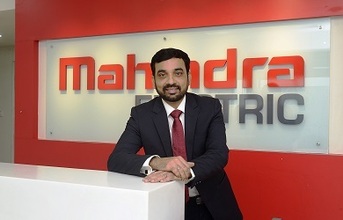
Under the first pillar of ‘Technology', we at Mahindra Electric will work in-house as well as with third parties to develop the EV technology that India has today. This will include aspects like the drive train (150kW and higher efficiency of ~ 95 percent), battery (380 V - 650 V systems) and power electronics (improved charging times of less than 1 hour), all of which will be taken up a notch to help us deliver the next pillar of ‘New Products'. Under this pillar, we are looking to develop and launch products essentially to cover two broad segments - one of mass transportation and the other of high performance vehicles. So, one can expect the likes of electric three-wheeler or an eBus to address the mass mobility segment and some high performance ‘objects of desire' to address the other segment. If we focus on the passenger segment alone, we will be first looking to electricity some of the existing products from the Mahindra stable and also work with different stakeholders to develop vehicles for the luxury segment. The third and last pillar of EV 2.0 is ‘mobility solutions'. Our efforts will go beyond just developing products, but also towards connecting the different elements of our mobility system which currently operate independently. These will include elements like charging stations, traffic management system, vehicles, drivers etc. Through technology, we will put them on a single platform increasing efficiency and getting more & more people onto EVs.
Tell us about your foray to get into the electric commercial vehicles segment. By when can we see some action from Mahindra Electric in MHCVs and buses?
In line with the NITIAayog proposal, Mahindra Electric already have an electric LCV in form of e-Supro (passenger as well as cargo) available in the market. We are also actively looking at entering the Electric Bus segment, for which we already have a suitable 9m bus platform for electrification, with our group company- MTBD, making the situation conducive for us. We are presently preparing to enter the market at an appropriate time.
What is your current production capacity at the Bengaluru plant and how much are you utilising it?
Our manufacturing facility at Bengaluru prides itself for its state of the art equipment and processes as well as for being one of the few IGBC certified manufacturing buildings in the country. The plant has been designed to have abundant natural lighting and ventilation to keep the energy requirements to a minimal. In addition, there is 100 percent LED lighting inside and plenty of energy requirements are fulfilled through solar energy harvesting from a 75kW solar park. The vehicles manufactured inside the plant require no paint for the body panels and use solar power as their first source of energy; making them truly 'born green' vehicles.
(Continued on next page)



























